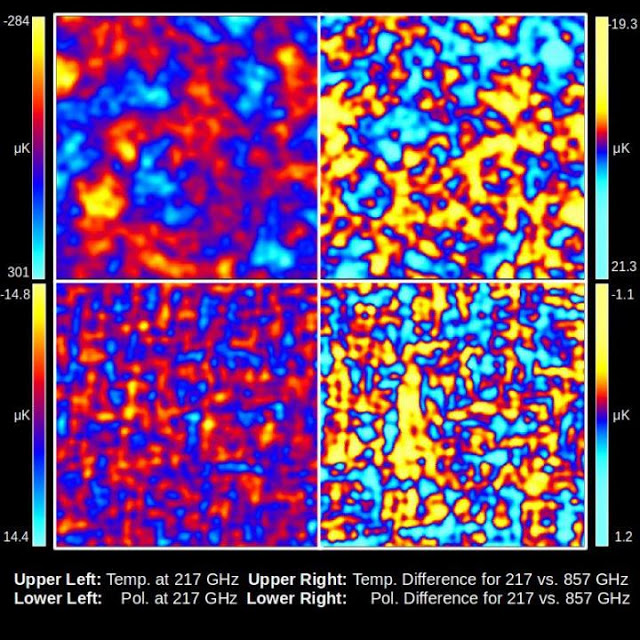| Online: | |
| Visits: | |
| Stories: |

| Story Views | |
| Now: | |
| Last Hour: | |
| Last 24 Hours: | |
| Total: | |
Oldest Light in the Universe Allows Insight into Birth of the Cosmos
Astrophysicists have developed a new method for calculating the effect of Rayleigh scattering on photons, potentially allowing researchers to better understand the formation of the Universe.
University of British Columbia (UBC) theoretical cosmology graduate student Elham Alipour, UBC physicist Kris Sigurdson and Ohio State University astrophysicist Christopher Hirata probed the effect of Rayleigh scattering — the process that makes the sky appear blue when the Sun’s photons are scattered by molecules in the atmosphere — on the cosmic microwave background (CMB).
Credit: UBC Science
“Detecting the Rayleigh signal is challenging because the frequency range where Rayleigh scattering has the biggest effect is contaminated by ‘noise’ and foregrounds, such as galactic dust,” lead author Elham Alipour said.
By using different high-frequency channels to observe the CMB and combining this information, researchers may be able to better isolate the Rayleigh signal. This calculation of the effects of Rayleigh scattering on cosmology might help us better understand the formation of our Universe 13.6 billion years ago.
“The CMB sky is a snapshot of the early Universe, it is a single frame in the movie of the Universe, and we have shown that Rayleigh signal gives us another fainter snapshot of the same scene at a slightly different time,” co-author Kris Sigurdson explained.
The findings have been highlighted in Physical Review D.
Contacts and sources:
Silvia Moreno-GarciaUniversity of British Columbia
Source:




